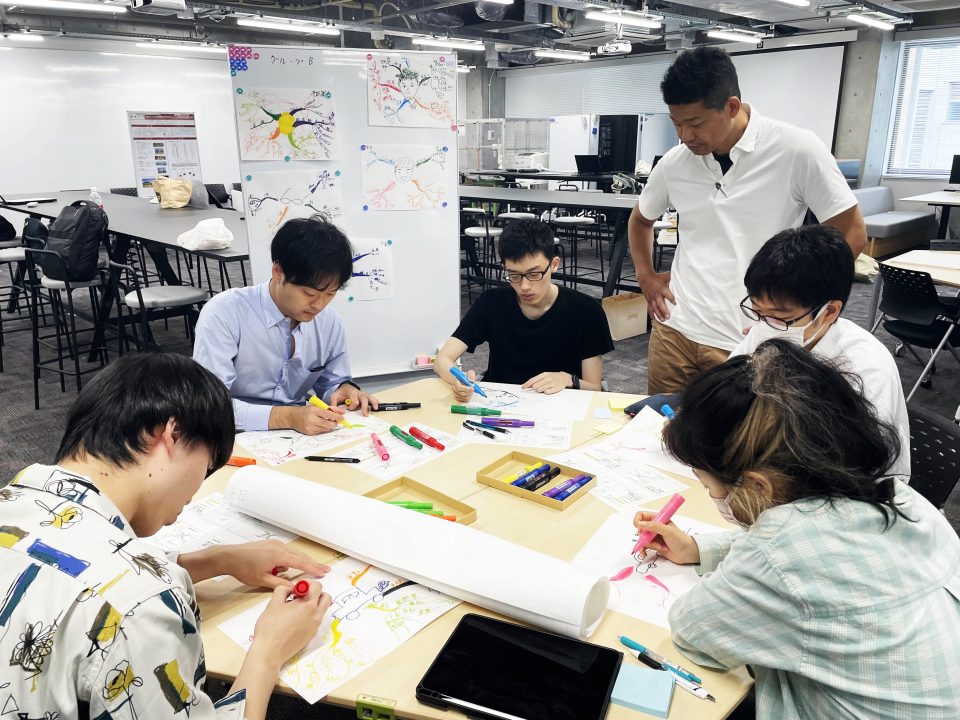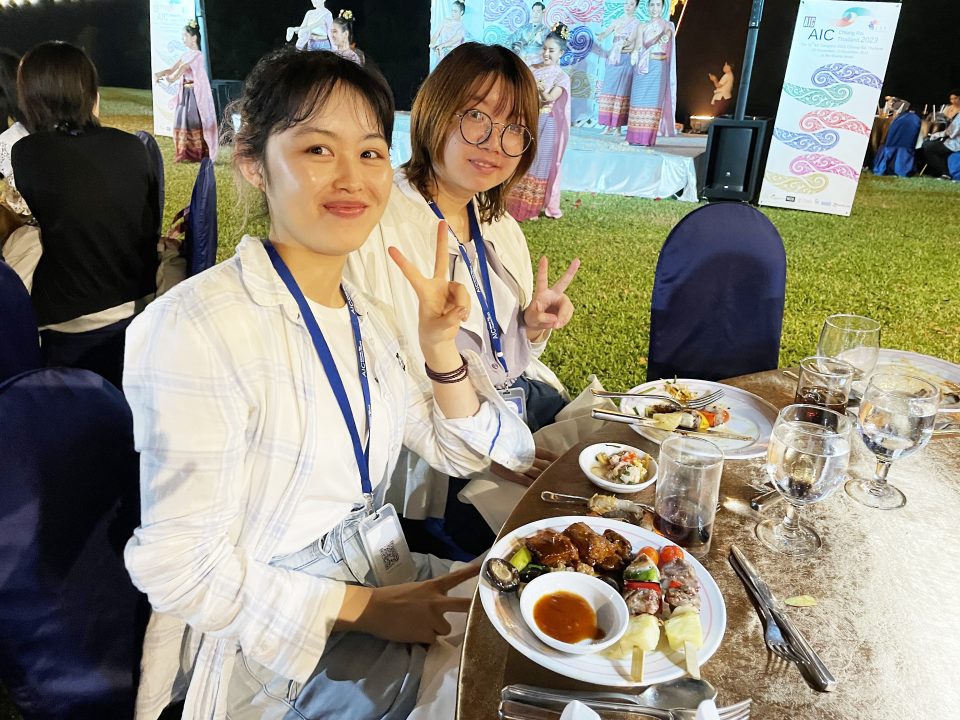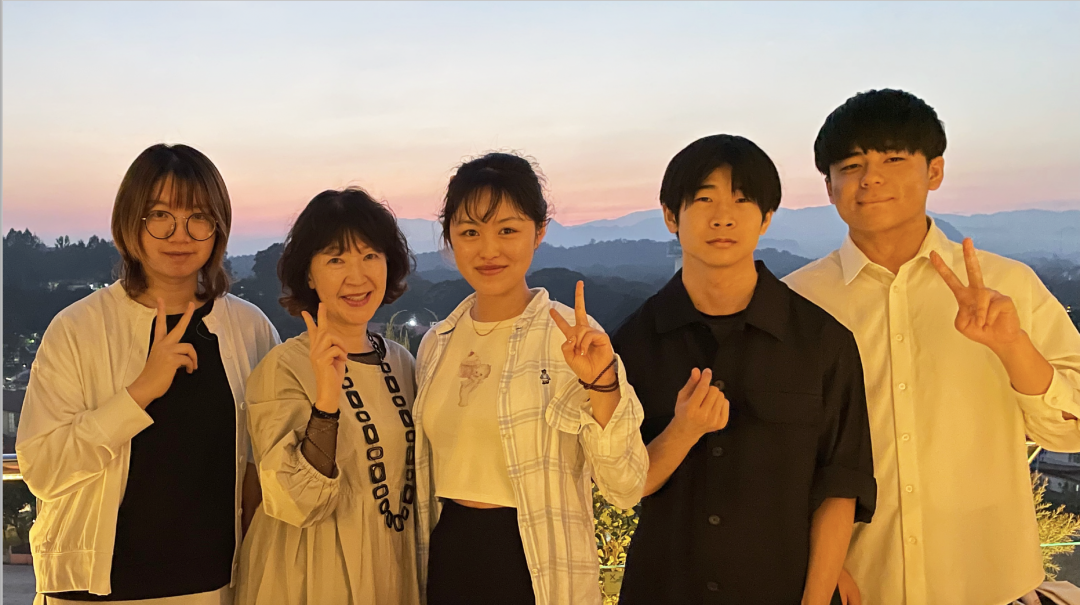Hang Jin is an international student from Tieling, located in Liaoning Province in northern China. She majored in Computer Science and Technology at Dalian University of Foreign Languages, a university near her hometown. We asked her about her research and daily life as a graduate student at Meijo University.
Jin presenting her research during a poster session at an international conference
I heard you’ve been interested in Japan for a long time. What sparked that interest?
I’ve been watching Japanese anime since I was a child. My favorite was Detective Conan.
So that’s why you also enjoy mystery novels like those by Conan Doyle and Agatha Christie. I heard your talents include playing the koto and dancing?
I’ve been playing the koto since I was very young. But it’s not the tightly strung Japanese koto—it’s the Chinese version, known as the zheng. As for dancing, I practiced traditional dance. In high school, I performed at our school’s cultural festival wearing a red costume.
Why did you choose Aichi Prefecture (Nagoya) as your study abroad destination?
I had already been studying Japanese at my university in China, and I had visited Japan twice—once to Tokyo and once to Osaka. By the time I came to Japan, COVID-related restrictions had eased, but Tokyo still felt extremely crowded, so I thought Nagoya would be a better choice. Following my mother’s advice (she teaches English) I spent six months as a research student at Nagoya Institute of Technology while exploring further opportunities.
Why did you choose Professor Kawasumi’s lab at Meijo University?
While browsing university websites, I learned that Meijo University’s Graduate School of Science and Technology is home to a Nobel Prize–winning professor. That really caught my attention. I began looking for a lab that matched my research interests, and that’s how I found the Kawasumi Laboratory. It also stood out to me that she is the only female professor in the field of computer science here.
What is your impression of Meijo University?
I’ve noticed that there are a lot of male students here! (laughs) Back in China, the gender ratio was more balanced—about fifty-fifty.

What kind of research are you working on?
I’m conducting a quantitative analysis of how Japanese and Chinese people emotionally respond to seasonal landscapes.
Can you explain what that involves?
Professor Kawasumi had previously conducted a study analyzing color impressions in traditional townscapes of Aichi Prefecture—specifically in Ichinomiya, Tokoname, and Arimatsu. I participated in that project last year as a co-author. However, I realized that the way people perceive landscapes can differ between Japanese and Chinese individuals. Even among Chinese people, there may be differences in perception between those from the North and those from the South. If we can better understand those differences, I believe it could help inform landscape design guidelines, including those aimed at tourists.
This time, your focus is on Takayama in Gifu Prefecture, correct?
Yes, studying Takayama in Gifu Prefecture (Hida-Takayama) was recommended to me by Professor Kawasumi. The area is close to Shirakawa-go, a UNESCO World Heritage site, and is known for its snowy winters and popularity among tourists.
What do you find challenging about graduate school?
During my undergraduate years, I didn’t have many opportunities to express my opinions or engage in discussions during class, so doing that in Japanese has been quite difficult for me.

What have you found most educational or beneficial so far?
I’ve found it especially educational to gain experience presenting my research at academic conferences, both in Japan and abroad. I also attended an international conference in Chiang Rai, Thailand, where I co-authored a poster presentation and helped explain it in English.
Is there anything you hope to challenge yourself with before completing your degree?
I’d like to focus on writing and presenting academic papers in English so I can present at international conferences. In June, I’m also scheduled to co-present at the Annual Conference of the Color Science Association of Japan, in Kyushu.
Is there anything you find inconvenient or, on the other hand, particularly comfortable about life in Japan?
The toilets are clean and easy to use. But warm toilet seats and washlets are already well-known in China, so I wasn’t too surprised! (laughs) Also, elevators and escalators exist in schools in China too, but they’re less commonly used. In Japan, I find myself using them more often.
I hear you’re working part-time at a strawberry candy shop. Have you had any difficulties or unpleasant experiences?
I started the job through a friend’s recommendation, and everyone there has been really kind, so I haven’t had any problems at all.
What are your dreams for the future?
I’d like to work in Shanghai someday, but I’m not sure if I’ll stay there permanently. Mostly, I want to give back to my parents, who have given me so many opportunities to grow.

[Interview Date] July 18, 2024

